

Global high-mix volume high-speed PCBA manufacturer
9:00 -18:00, Mon. - Fri. (GMT+8)
9:00 -12:00, Sat. (GMT+8)
(Except Chinese public holidays)


Global high-mix volume high-speed PCBA manufacturer
9:00 -18:00, Mon. - Fri. (GMT+8)
9:00 -12:00, Sat. (GMT+8)
(Except Chinese public holidays)
HomePage > Blog > Knowledge Base > PCB Assembly and Manufacturing | Their Process, Services and Differences
Printed circuit boards are almost the core components of all modern electronic devices - from smartphones and medical instruments to aerospace systems and automotive control units, PCBs are everywhere. The quality and precision of a circuit board directly affect the functional performance and long-term reliability of the entire machine. So, how are PCBs produced? What is PCB assembly? What are the differences between PCB manufacturing and assembly?
In this article, we will answer these questions. From the design and manufacturing of circuit boards to soldering, inspection and delivery, the entire process is analyzed one by one. And we will recommend an excellent and reliable manufacturer for customers who need PCB manufacturing and assembly services. Whether you are developing a prototype, preparing for mass production, or looking for a reliable PCB service provider, this article will help you make an informed decision.
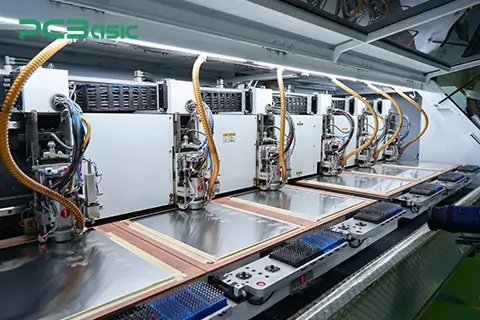
Printed circuit board (PCB) manufacturing is the manufacturing, assembly, and production of electronic component printed circuit boards. Boards are the foundation for the electrical interfaces of the components, signal, and power, which are desirable.
It starts as a schematic design, followed by a physical board design. Fiberglass and copper are used to create layers that determine conductive paths. Once the board layout has been determined, there are more processes like etching, drilling, and plating to identify the design further.
PCB production is part of electronics because it provides the electrical and structural support for the device to function as it should. From medical equipment to consumer electronics to space units, a well-made circuit board provides performance as well as reliability.
Sophisticated manufacturing techniques allow for the production of complex as well as simple structures, which are well-suited for precision industries. Automated techniques like Surface Mount Technology (SMT) and Through-Hole Technology (THT) provide reliability and efficiency, minimize errors, and maximize longevity.
A robust manufacturing process for a PCB is the foundation of any organization utilizing high-quality electronic components. Material choice, the use of sophisticated manufacturing methods, and rigorous process quality control ensure circuit boards are to specification in actual operating conditions.

PCB production is a process that involves different well-organized steps to create efficient circuit boards for different uses.
1. Design & Layout – PCB layout design is initiated with the use of software such as Altium Designer or Eagle. The layout specifies where traces, points of connection, and components are to be located. The circuit pattern is printed by applying the design onto a copper-coated laminate with a photoresist layer. Ultraviolet light is utilized to expose the pattern, followed by development to form the paths of the circuit.
2. Etching – The unwanted copper is dissolved with a chemical solution, and the desired conductive paths are left behind.
3. Drilling – Component vias and leads are drilled out to make the correct electrical connections between layers. Plating and copper deposition involve the deposition of a thin layer of copper on drilled holes, utilized to enhance electrical conductivity and enhance connections.
4. Solder Mask Application – A solder mask is applied to shield the circuit board from being influenced by short circuits.
5. Silkscreen Printing – Component designations, logos, and labels are created for easy identification and assembly. The ultimate surface finish is achieved through a finishing operation, i.e., Hot Air Solder Leveling (HASL) or Electroless Nickel Immersion Gold (ENIG), to shield the copper and improve its solderability.
6. Electrical Testing – The PCB is tested to ensure that all circuits function as intended before assembly.
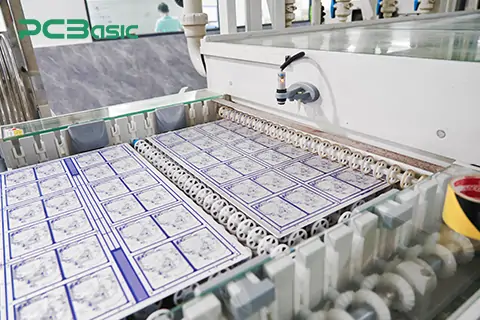
Strict quality control guarantees that every PCB is to design specifications and performs as intended.
1. Visual Inspection – Inspection for alignment problems, solder mask defects, and underetched regions.
2. Automated Optical Inspection (AOI) detects minor defects, circuit shorts, and missing features.
3. X-ray inspection is applied to multilayer circuit boards to examine for internal interconnections.
4. Electrical Testing – Offers continuity and isolation testing to verify signal flow properly.
5. Environmental Stress Testing – Expose PCBs to levels of temperature, humidity, and vibration to test for ruggedness.
An effective manufacturing process ensures that PCBs meet performance requirements across industries such as automotive, medical, and aerospace.
PCB assembly or PCBA is the process of mounting and soldering electronic components on a printed circuit board to form a functional circuit. It is a critical process in electronics production as it determines the extent to which the board will work satisfactorily when in use.
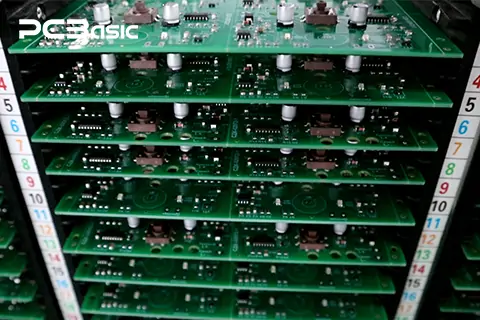
THT consists of passing component leads through holes within the PCB and soldering onto the board. The process creates strong mechanical bonds and is used in applications involving durability, i.e., aerospace and industrial equipment.
SMT PCB assembly involves the direct mounting of components onto the board without the use of holes. Small surface-mount devices (SMDs) are loaded by automated pick-and-place machines, which are subsequently soldered by a reflow oven. SMT is applied for dense designs and high-speed manufacturing, making it perfect for application in smartphones, medical devices, and automotive electronics.
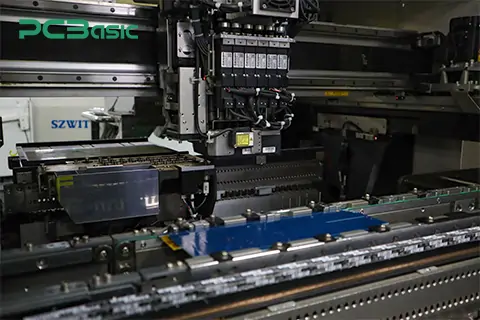
There are some circuits that have to use both SMT and THT components. Mixed technology assembly uses the best of both and optimizes the space and provides mechanical stability. It is applied widely in power supplies and telecommunication devices.
Solder masks protect PCB traces from oxidation and prevent solder bridges between adjacent pads. Closely defined solder mask openings ensure good contact between components and the board, reducing defects such as shorts and solder misalignment. High-precision manufacturing methods allow solder mask alignment to be accurate, improving product reliability.
PCB assembly is the process of transforming bare boards into fully functional electronic products. Below, we will gradually analyze the standard PCB assembly process for you.
Step 1. Component procurement
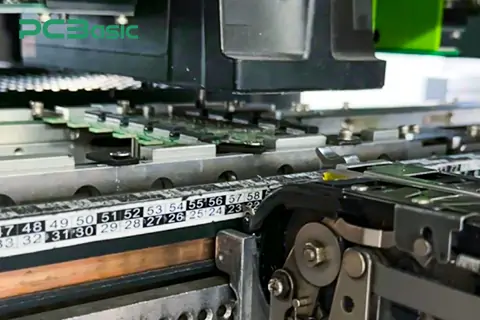
After the PCB production is completed, the PCB assembly manufacturer will purchase all the required components based on the BOM file provided by the customer, including passive components (resistors, capacitors, etc.), active components (ICs, transistors, etc.), connectors, structural components, etc. Some PCB service providers can offer one-stop procurement agency services and can also use materials prepared by customers themselves.
Step 2. Solder Paste Printing (SMT)
After the PCB bare board and all the required components are ready, you can proceed to the surface mount step. First of all, prepare the specific steel mesh. Then, place the steel mesh on the bare PCB. The solder paste printer will print the solder paste onto the solder pads. Using machine printing can ensure that there is sufficient solder on each component pad. Moreover, after the solder paste printer finishes printing, a reliable PCB assembler will also use the SPI machine to check for issues such as missed solder joints.
Step 3. Pick and Place
The circuit board coated with solder paste enters the surface mount process. The high-speed surface mount machine will automatically mount the components to the corresponding positions according to the coordinate file. For high-density devices such as BGA and fine-pitch ICs, mounting accuracy is particularly crucial.
Step 4. Reflow Soldering
After the surface mount is completed, the PCB enters the reflow oven. High temperature melts and solidifies the solder paste, thereby firmly soldering the devices. This step is the standard process flow for most SMT boards. After soldering, AOI will also be used to check whether the components are properly attached. For high-density devices like BGA, X-ray machines will also be used for detection.
Step 5. Through-hole Assembly
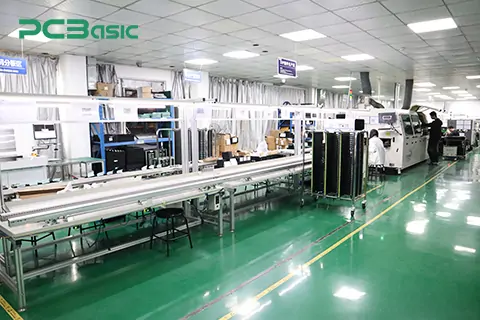
If the PCB contains through-hole components (such as transformers, large capacitors, pin headers, etc.), they will be manually or semi-automatically inserted after SMT.
Step 6. Wave soldering/Manual soldering
The plug-in components can complete the solder joints through wave soldering or manual soldering. Usually, for a small number of circuit board inserts, they are directly soldered by hand.
Step 7. AOI Visual Inspection
After the plug-in welding is completed, it will also be inspected by the automatic optical Inspection (AOI) equipment. It will check whether there are any missing or misaligned components; Whether the solder joints are short-circuited or poorly soldered; Whether the direction of the components is correct, etc.
Step 8. Functional Testing and Quality Inspection
Then, in accordance with the project requirements, functional testing, online testing, or X-ray inspection (for BGA devices) can be conducted on the assembled circuit boards to ensure that the delivered PCBAs can operate 100% normally.
A good PCB assembly process of a good PCB assembly manufacturer can bring about: higher product reliability, fewer production failures and rework, lower cost waste, and a faster product time to market.
Many people confuse PCB manufacturing with PCB assembly, but they serve different purposes.
|
Aspect |
PCB Manufacturing |
PCB Assembly |
|
Definition |
Creating the minimal PCB with copper traces and layers. |
Positioning pieces on the board to create an operational circuit. |
|
Main Processes |
Etching, drilling, layering, and finishing. |
Component assembly, soldering, and inspection. |
|
Output |
An empty circuit board with no parts. |
An already prepared electronic board ready for use. |
|
Technologies Used |
Photolithography, chemical etching, drilling. |
SMT, THT, reflow soldering, wave soldering. |
Aerospace and defense parts need precise PCB assembly and manufacture due to unforgiving conditions under which their electronic system should operate. All components and each process need to be extremely dependable in order to preserve peak operation under extreme tension, temperature change, and vibrations.
PCB manufacturers supplying products to defense and aerospace organizations must meet industry standards such as:
1. IPC-6012 Class 3 and Class 3A – Defines mission-critical requirements for high-reliability printed boards.
2. MIL-PRF-31032 – specifies military performance characteristics for PCBs.
3. AS9100 – Aerospace-specific quality management certification.
4. ITAR Compliance – Regulates export and import of defense-related PCB designs.
Defense and space applications must possess printed circuit boards from materials of given properties to sustain themselves in harsh environmental conditions. They are:
1. High-temperature laminates – Withstand temperatures over 200°C.
2. Aluminum and copper cores are employed in heat dissipation of high-power systems.
3. The gold plating process improves conductivity as well as corrosion resistance.
4. Conformal coatings protect against chemical reactions, humidity, and mechanical stressors.
Fewer corporations are able to achieve the levels of accuracy, strength, and testing demanded by the defense and aerospace industries. These centers are investing in
1. Advanced test techniques, such as X-ray testing and thermal cycle tests.
2. Sterilization conditions for avoiding contamination.
3. Secure supply chains to defend intellectual property.
Selecting the correct supplier will affect cost, quality, and lead times.
The most important factors to consider when selecting a PCB assembly and manufacturing partner are:
1. Certifications – IPC, MIL, and aerospace standards up to date.
2. Manufacturing ability – Adept at manufacturing multilayer boards, HDI PCBs, and mixed-technology assemblies.
3. Testing and quality control are achieved by means of automated optical inspection (AOI), X-ray, and functional test methods.
4. Personalization features – Facilitating customized designs and small-batch prototypes.
Wholesale PCB manufacturing plants and assembly plants offer price reductions and manufacturing efficiency with:
1. Purchasing bulk material – Reduced raw material cost.
2. Computer-controlled assembly lines facilitate faster processing and uniform quality.
3. Scalability – Capacity to carry out bulk production without postponements.
China is still a world leader in PCB manufacturing because of:
1. High-end automation – Robotic assembly and high-speed SMT lines.
2. Low-cost production – Reduced labor costs without any compromise on quality.
3. Stringent quality control – Adherence to global standards such as ISO, IPC, and RoHS.
4. Mass production – Capable of handling orders from prototypes to mass production.
Collaboration with a good manufacturer allows for a smooth production process that is both technically compliant and within budget. Then, I’d like to introduce a reliable PCB manufacturing and assembly partner to you - that is PCBasic.
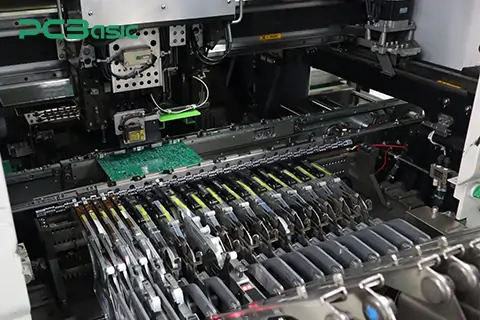
PCBasic is a popular brand in China's high-quality PCB assembly and manufacturing industry. With excellent facilities and a robust supply chain, PCBasic produces high-quality circuit boards for industries as diverse as consumer electronics to space.
The Chinese supply chain enables productive work on various scales. PCBasic’s main advantages are:
1. Mass production – Sophisticated factories can manufacture in mass amounts without delay.
2. Durable assembly – SMT PCB assembly through sophisticated methods guarantees precise assembly.
3. Stringent quality control – The plants use automated optical inspection (AOI), X-ray inspection, and functional testing.
4. Rapid prototyping—Quick turnaround times enable quick improvement of product development cycles.
And PCBasic is a wholesale PCB manufacturer. Working with wholesale PCB manufacturers is beneficial in the sense that:
1. Economic production – Effective bulk acquisition of materials and streamlined processes minimize expenses.
2. Customization capabilities – Capacity to handle specialized applications, such as rigid-flex PCBs and multilayer boards.
3. End-to-end services – From PCB design support to end assembly and packaging.
The world of PCB is evolving with new technologies that maximize efficiency, reduce waste, and support newer electronics.
1. Miniaturization – Small size, thin trace and microvia-based high-density PCBs.
2. The increasing consumer requirement for foldable and wearable electronic devices is creating a huge demand for flexible printed circuit boards.
3. 3D printing – Additive manufacturing technologies are being researched for faster PCB prototyping.
1. AI and robotics-based inspection systems offer much greater accuracy to the operations that are conducted along the automated production line.
2. AI-defect detection – Machine learning algorithms enhance quality control by detecting defects sooner.
3. Smart factory factories utilize sophisticated real-time analysis methods with the aim of greatly improving and advancing the overall productivity of the factory operations.
1. Lead-free soldering is less stressful in the environment without sacrificing strength.
2. Green raw materials – More and more producers are using halogen-free laminates.
3. There are increasingly well-known recycling programs for the recovery and reuse of printed circuit board parts.
The choice of the right PCB assembly and manufacturing partner will dictate the cost, the quality, and the lead time. PCBasic offers best-of-breed solutions with a world-class supply base, state-of-the-art technology, and stringent quality standards.
With the continuous innovations and advancements in sustainability practices, artificial intelligence, and automation technologies, the future for the PCB manufacturing sector is extremely bright. With a professional and trustworthy supplier, the products manufactured not only fulfill the set industry standards but are also responsive to the constantly changing trends in technology.
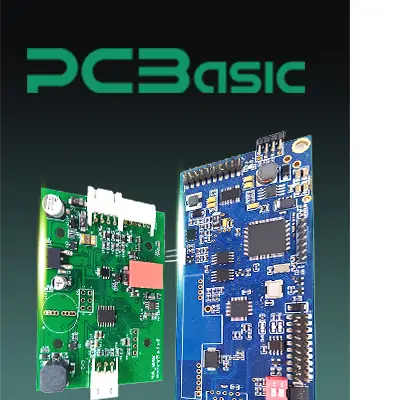 About PCBasic
About PCBasic
Time is money in your projects – and PCBasic gets it. PCBasic is a PCB assembly company that delivers fast, flawless results every time. Our comprehensive PCB assembly services include expert engineering support at every step, ensuring top quality in every board. As a leading PCB assembly manufacturer, we provide a one-stop solution that streamlines your supply chain. Partner with our advanced PCB prototype factory for quick turnarounds and superior results you can trust.

Assembly Enquiry
Instant Quote
Phone contact

+86-755-27218592
In addition, we've prepared a Help Center. We recommend checking it before reaching out, as your question and its answer may already be clearly explained there.
Wechat Support

In addition, we've prepared a Help Center. We recommend checking it before reaching out, as your question and its answer may already be clearly explained there.
WhatsApp Support

In addition, we've prepared a Help Center. We recommend checking it before reaching out, as your question and its answer may already be clearly explained there.
